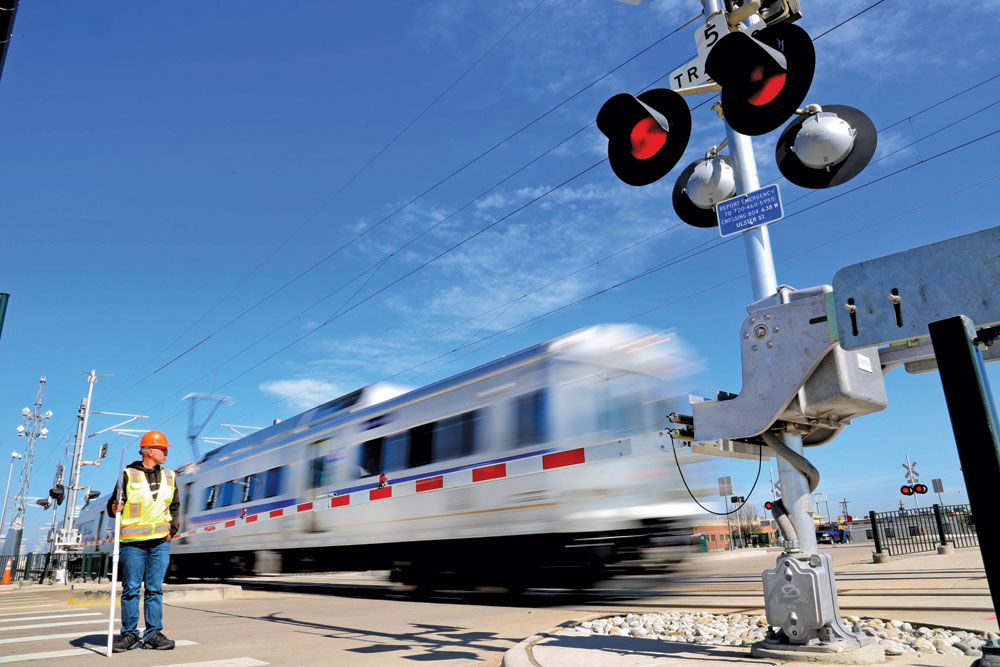
Good-bye flaggers. Hopefully, good bye horns in early August.
On the evening of June 21, about 40 sleep-deprived people gathered in the Park Hill Village Club House for an update from RTD on the status of the train horns that had been keeping them awake for two years.
RTD’s agenda was to review the information on the charts shown at the bottom of the adjoining page so the attendees would understand the requirements to reach the goal of no horns. But a frustrated speaker in the back of the room called out, “We just want to hear about the horns.”
To view the article with photos and graphics, click here: Update on A Line Horns
The short answer to that question: Early August is the soonest quiet zones could begin.
The Public Utilities Commission (PUC) had announced days before the Park Hill meeting that they were inspecting each of the A Line crossings, and as the visual inspections were completed and approved, the flaggers were being removed. Based on the PUC’s planned schedule of approvals, RTD said the last of the 11 crossings, Quebec, is expected to be approved at the July 11 PUC meeting. Henry Stopplecamp, assistant general manager for RTD’s capital programs said they are addressing each requirement in a thorough and careful manner to have the highest likelihood of approval.
The applications for quiet zones have been prepared and will be submitted by the cities of Denver and Aurora after the July 11 crossing approval so quiet zones for the entire line can be addressed at once. With a 21-day period allowed for the decision from the FRA, that would make early August the soonest quiet zones could be established.
Denver Transit Operators General Manager Anne Herzenberg explained why, after all the prior approvals, yet another one is required before the establishment of a quiet zone. “The FRA is allowing us to operate now and they are allowing us to take the attendants off because they believe that the design of the crossings is safe and the system is functioning as designed. We have passed that standard with the FRA. But they are still requiring us to sound horns—part of the safety system is the horns. The next question that they have to answer, that everybody in this room is so anxious about—they now want to take the horns away. That’s going to fundamentally change the crossings. So now the city will file the notice of establishment of quiet zones, and the FRA gets 21 days after that to object. And they can say, ‘No, we don’t think that the crossings are safe enough if you stop sounding the horns. They have approved the crossings once. But now they have to do it again because they are looking at a different question. They are looking at the question of, ‘Can the railroad not sound the horns?’
“‘I think they will,’ is my personal and professional opinion, but there’s not guarantee,” said Herzenberg.
Scott Reed, assistant general manager for RTD communications said when the cities request the quiet zone, they are accepting a risk and he reiterated the importance of obeying the flashing lights and gates. The quiet zone is established in perpetuity, but he added, “If we start seeing issues, the FRA could say, ‘No more quiet zones.’”



0 Comments